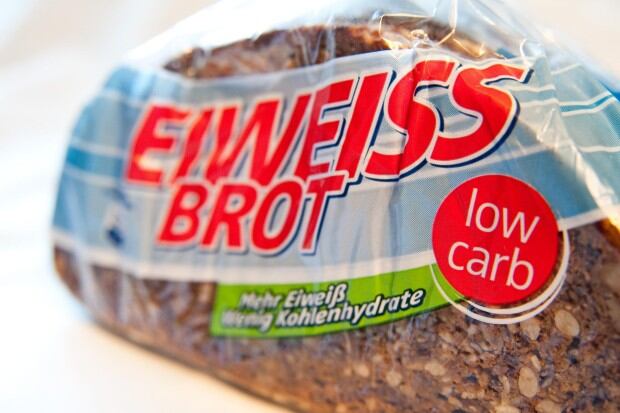Just today, protein ice cream maker Wheyhey announced it had won distribution in the UK from the powerful natural foods retailer, Whole Foods. It is making claims around lean muscle growth and muscle recovery, which along with bone, weight, heart and satiety claims, are the most common for protein forms.
A report produced earlier in the year by the WHO’s Food and Agriculture Organization (FAO) rocked the boat a little by indicating a broad physiological efficacy preference for animal proteins due to differing amino acid profiles, but both animal and plant protein sectors report buoyant sales be they soy, dairy, fish, nut, pea…
Blending plant and animal proteins is not new but is also rising in popularity, with suppliers of both forms here at the International Congress of Nutrition in Granada, Spain, this week confirming both the buoyant market and increased interest in novel protein blending.
And that is for proteins sold as nutritionals not texturants or bulking agents or for other sensory rather than healthful purposes.
Health claims are limited, but protein content claims exist in many countries and has seen the likes of General Mills extending its Fiber One line of bars with protein variants. It has made no secret of the fact it seeks to popularise high-protein as it did with fibre.
The food giant also launched Larabaralt, a pea protein based version of the Larabar healthy bar range sold in healthfood channels.
Kellogg’s is going even further with the launch of ‘FibrePlus Antioxidants Protein’ and protein versions of some of its breakfast cereals. Only time will tell if that kind of 3-way nutrient sell will intrigue or infuriate consumers.
Nature Valley is another protein bar player to watch.
Mintel noted products utilising ‘high protein’ claims (more than 10 g/20% of RDA) accounted for a massive 28% of food and drink launches between August 2012 and July just gone.
The rise of protein in the US is likely to influence European developments, especially in bars, according to Mintel analyst, Chris Brockman.
“America’s influence on the sector may move beyond driving a fibre revolution in Europe to include pushing protein to the fore in the European marketing mix,” he observed.
“European share of high protein claims for new bars has increased from little more than one in 10 in 2010 to over three in 10 in 2012. Germany, the UK and France have been the top three countries in Europe for the last three years. Globally, high protein claims appear to have fallen from around one in 10 new products in 2011 to 7-8% in 2012, but the slowdown may well prove temporary given good results of leading brands.”
Euromonitor analyst Diana Cowland observed that while whey was still king, “it is facing competition from other plant-based sources of protein such as pea protein and soy protein.”
“This is particularly true due to the rising cost of whey protein driven by China. Soy protein in particular could well see growth from products targeting the ageing population due to its link with cardiovascular health, such as in the US, where it holds a claim for reducing the risk of heart disease.”
High-protein yoghurt

One sector that is booming in the US and beginning to grow in Europe is high protein yoghurt, where the low fat, high protein Greek-style yoghurt category has increasing its share of the overall US yoghurt market from just 1% in 2007 to 35% in mid-2012.
A sub-category is ‘men’s yoghurts’ with the high-protein US brand Powerful Yogurt launched in March and moving into the UK and Ireland with extra-large pots of high-protein yoghurt targeting men. Danone has done a similar thing in Bulgaria.
Tom Vierhile, innovation insights director at Datamonitor, observed of the trend: “Greek yoghurt started it (mainly Chobani), but General Mills in particular is leveraging the high protein concept above and beyond that. They recently came out with a high protein version of Go Gurt.”
Breakfast
He said breakfast cereals were waking up to protein’s potential. “Protein was probably underutilised in this area, but activity has picked up of late.”
Other brands active in the area include Dannon Activia Breakfast Blend Lowfat Yogurt and Special K Flatbread Breakfast Sandwich.
Cowland said breakfast was not all about foods necessarily. “We are also seeing the emergence of high protein breakfast drinks such as Special K’s Protein Shakes in the US – in fact Special K well recognised as a weight management brand have a range of high protein products.”
"Interestingly this trend is growing in Australasia where brands such as Up&Go have a growing presence on the market. It has also been heavily promoted in the UK this summer with multinational’s launching new products such as Arla’s Wing-Co.”
'Eiweissbrot'

In the bakery area Cowland observed the rise of ‘evening bread’, “which sells for a premium and has found great resonance not only among the weight conscious, but is also a hit with Germany’s burgeoning diabetic consumer base.”
“Virtually every German bakery offers at least one type of eiweissbrot (‘protein bread’), but high protein bread is not just available in unpackaged/artisanal form, but also sold as a packaged/industrial product.”
